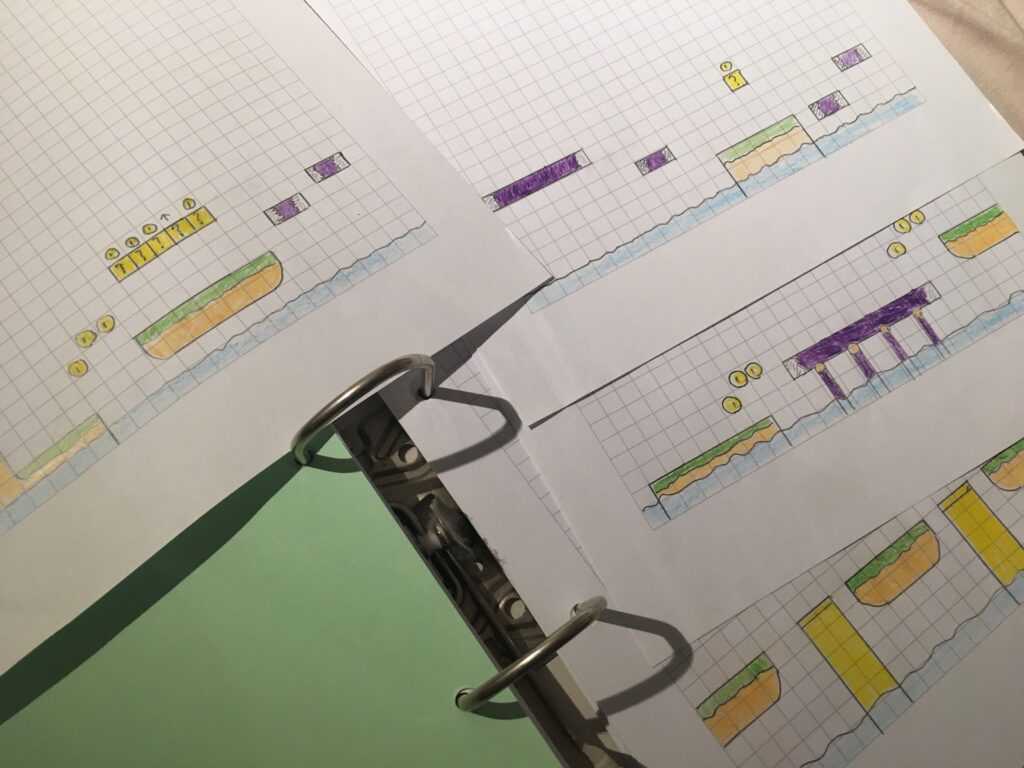When it comes to Mario games with dedicated modding scenes, there are a few notable ones that come to mind. There’s Super Mario 64, which has become one of the most heavily modded games in history thanks to the PC port and efforts by folks like Kaze Emanuar. There’s Super Mario World, which has so many mods and resources available for it that an entire website exists to archive them and support the community.
And there’s Mario Kart Wii, a game which has gotten so many custom tracks and characters that people like TWD98, Mayro and MarioPower55 have built entire YouTube careers out of playing them.
Yet despite this, there are also a surprising amount of mods for games you’d never expect to see edited at all. Such as Luigi’s Mansion, Super Mario Sunshine and today’s topic of choice, New Super Mario Bros 2.
With the best example of the latter’s mods being Super Mario Bros Next. Started in 2017 and worked on by a dedicated team since then, the title aims to be the Newer Super Mario Bros Wii of NSMB 2 hacks, with custom graphics, music and sprites galore being added to make it feel like a whole new Mario adventure.

It’s a truly incredible looking game, and one that made us curious just how far the New Super Mario Bros 2 community had come since the game’s original release.
So in today’s interview, we’re gonna learn all about it and its team, and see what makes the whole thing tick. You ready? Let’s do this!
The Interview
So, first things first… who are you? Who are the people working on this project?
Gimzie: Hello there! I’m Gimzie, the lead (and sole!) level designer for Super Mario Bros. Next. Generally speaking, if you’ve seen a stage from the game, it was put together by me. I also handle other parts of development that revolve around gameplay design (stage mechanics, enemies, etc.), as well as some small things with audio here and there.
Hus: Hi, I’m Hus, one of the graphic designers for SMBNext. I mainly focus on creating tilesets and backgrounds, which can be seen in various sneak peeks and the latest trailer. I also help out with creating textures for world maps, as well as other miscellaneous graphics.
bunten: Hey, I’m bunten, one of the composers for SMBNext. Generally, my work for the project involves composing new music, as well as arranging and remixing tracks from other Super Mario games. I also work with SMBNext’s sound design, creating sound effects and whatnot.

Explos: I’m Splo. I do a variety of things for SMBNext, but I primarily focus on creating models for our custom enemies & mechanics as well as the world maps. I also do some other miscellaneous things such as maintaining and updating CoinKiller, as well as some other smaller tools, documenting various aspects of NSMB2 (such as sprite data, etc), and working with our graphic/asset designers to ensure consistency.
Bent: I’m Bent. I am the programmer for SMBNext. This includes programming for the game itself (custom sprites, mechanics, etc.), and also other tools like our level editor, CoinKiller, and our custom code insertion tool.
And how did you get into gaming? What was your first game?
Gimzie: My very first gaming system was actually a handheld, the Nintendo DSi. I had it gifted to me for my birthday, and later went out to buy a game to play at the local HMV (back when HMV actually existed). Eventually, I settled on buying Sonic Rush, which ended up being both my first video game and also one of my most beloved video games. Embarrassingly, I only truly completed it back in 2020, but I still generally replay it once a year.
Hus: The first game I played was Mario Kart 64. My neighbor and I used to always play that together, as well as other multiplayer games like Bomberman 64 and Mario Party 2, which led to me wanting to play more video games in general.
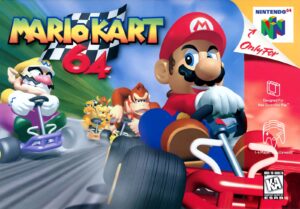
Mario Kart 64 was Hus’ first game
bunten: The first game I played was New Super Mario Bros. Wii. My older siblings owned the game and I very quickly took a liking to it. It was from there that I was introduced to the Mario series, and video games as a whole.
Explos: I started playing games when I was around 3 years old, playing games such as The Simpsons: Hit & Run as well as a variety of other games we had for the PS2. Eventually, I got consoles of my own, such as the Nintendo DS Lite and Nintendo Wii, and slowly started to build up and grow my game library from there, with it eventually culminating into the excessively large backlog I have today.
Bent: I don’t actually fully remember. Might have been my mom’s GameBoy with Tetris, or The Settlers 2 on PC.
How about the Mario series in particular?
Gimzie: My first entry into the Mario series was, ironically enough, New Super Mario Bros. for the Nintendo DS. I think a lot of us on the team actually have a particular likening to the franchise, which probably explains why we’re developing a mod for it.
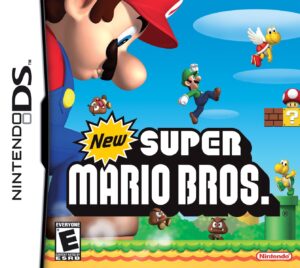
This was Gimzie’s first Mario game
Hus: My first mainline Mario game was Super Mario Land 2. I really liked it the first time I played it, as compared to other Game Boy games, it was quite long and unique. Its uniqueness is especially what I miss in the more recent 2D Mario games.
Explos: The first Mario title I owned was New Super Mario Bros. for the Nintendo DS, and from there I continued on to play almost every mainline and spin-off title in the entire series.
Bent: New Super Mario Bros. for the Nintendo DS, and Super Mario Land 2 shortly after.
What games are you currently playing at the moment?
Gimzie: I haven’t been playing games very consistently as of late, but my time is currently split between Splatoon 3 and the PlayStation Portable remake of Persona 2: Eternal Punishment (which recently got a semi-original fan translation). I’m looking forward to playing The 25th Ward: The Silver Case in the near future as well.
bunten: Well, at the time of writing, I’m not playing much outside of Minecraft and whatever else I feel like booting up at random. A little while back, I finished playing Dying Light and its DLC, The Following, so I’m likely going to take a little bit of a break before jumping into something new.
Hus: At the moment I’m playing Splatoon 3 and the PSP remake of Megami Ibunroku Persona. I plan on playing NieR:Automata next, whenever I get around to it.
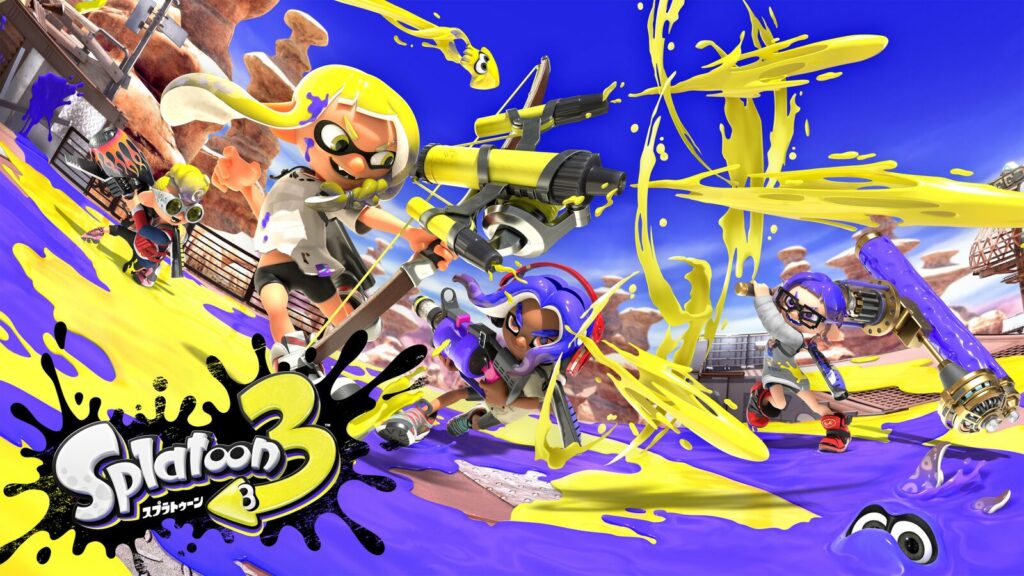
Hus is currently playing Splatoon 3
Explos: Everything.
Bent: Currently, nothing at all. The only games I played this year are the two Famicom Detective Club games on the Switch.
Onto ROM hacking now… how did you get into the hobby?
Gimzie: While my first exposure to ROM hacking was through Newer Super Mario Bros. Wii around its release, I’d say that my first real foray into ROM hacking was actually through Portal 2, where I would work on various maps that I would then publish to the game’s community workshop. In that sense, I’m not sure if the “hacking” part applies there, but that was the first time I had actively considered level design in my projects.
Hus: I saw people creating custom levels for New Super Mario Bros. Wii, and that got me interested in modding my Wii. I’d say that’s how I got into the hobby.
bunten: When The Legend of Zelda: Breath of the Wild released, I bought the game on launch day for Wii U and played it a ton. After a while, I came across people who were able to edit their saves for the game, which allowed them to do things otherwise impossible, such as giving themselves weapons with unobtainable attributes, like impossibly high durability. After I found out about this, I began looking into it and subsequently began modding my Wii U.
Explos: I came across videos of some really early Super Mario World and Super Mario 64 ROM hacks, and ended up looking into it further and discovering tools such as ToadsTool 64 and Lunar Magic. Eventually I came across New Super Mario Bros. ROM hacks and have followed along ever since.
Bent: I really enjoyed NSMBDS, and after a bunch of replays I wanted to create my own levels for the game. At first I just drew them on paper (in fact, I actually still have that binder), but later I randomly came across forums about NSMBDS modding and very quickly started creating my first (terrible) levels.
What was the first hack or mod you worked on?
Gimzie: Going off what I said earlier, I worked on a lot of custom maps for Portal 2. Sometimes I’d handle the level design only, while other times I worked on the environmental design as well. At some point, I did start working on a large-scale mod with someone, but the project never went anywhere. Funnily enough, that person is now doing environmental design for Portal 2: Desolation, which I can’t wait to play once it releases.
Hus: After seeing other people make custom levels for New Super Mario Bros. Wii, I decided to create a mod of my own. I only ended up making a few levels for it, and it never really went anywhere.
bunten: My first “serious” experience was with modding Super Mario Maker. My experience with pixel art wasn’t very good, yet despite this, my earliest work began with modifying the game’s themes (i.e. Overworld, Underground, etc.), which involved me modifying the tilesets and backgrounds. The first mod I publicly released was a pixel art rendition of the Cap Kingdom from Super Mario Odyssey, as a modification of the Ghost House theme in the Super Mario Bros. game style.
Explos: Despite knowing about ROM hacking and trying out various tools for a variety of different games, I only seriously started working on projects with NSMB2. Nintendo 3DS modding was just starting to become a possibility and I decided to look into what was possible in terms of modding games for the system–eventually coming across the work-in-progress NSMB2 level editor, CoinKiller, and deciding to contribute to documenting the game.
Bent: Around 2012, I started creating an NSMBDS mod called New Super Mario Land. It never really got anywhere because levels and graphics constantly got scrapped as I learned new skills, like graphics editing and later code modding. I basically never released anything because I was too perfectionistic about what I was working on back then.
Why New Super Mario Bros. 2? What made you decide to get into modding that game rather than say, the DS, Wii or Wii U versions?
Gimzie: Sometime mid-2016, it popped into my mind that there were modding communities for the New Super Mario Bros. series, and this was around the time that Nintendo 3DS modding really started to open up, so naturally, the question of “why hasn’t anyone done anything for the 3DS entry?” came up. I ended up picking up the basics of level editing, creating a tutorial for users on GBATemp.net, and eventually meeting Explos, who had similar goals in mind.
Explos: After spending a lot of time working at documenting various aspects of the game, I eventually figured that enough of the game was documented to begin work on some kind of project. Eventually that project grew in scope, going from a simple collection of custom levels created solely by myself to a full-length project, with a team of several members implementing elements such as new graphics and music. This project eventually became the foundation upon which Super Mario Bros. Next would be formed.
Hus: In late 2016 I discovered that NSMB2 modding started to open up. I already really liked the Nintendo 3DS, so modding the only 2D Mario entry on the system just made sense. I had some experience with NSMBW modding at the time, so it wasn’t too difficult to get into custom levels, at least.
Bent: I always thought that NSMB2 might be a good base for a ROM hack. While the original game is pretty bland in regards to its level design, the engine itself has a lot of potential. Coming from NSMBDS, I already had experience with reverse engineering code for ARM processors, which made it very easy to get started with NSMB2.
Did any of you work with the Newer Team back when Newer Super Mario Bros. Wii and its sequels were in development?
Bent: I joined the Newer Team around 2016. While intending to join to work on Newer U (R.I.P.), I mostly helped out with a few code mods for Newer DS. Mostly custom enemies like the Angry Sun, the Thundercloud and the final boss.

Above: Bent helped out with the boss shown in the video above.
Onto Super Mario Bros. Next now. What gave you guys the idea to create this game?
Gimzie: At the time of SMBNext’s conception, there were essentially no substantial mods for New Super Mario Bros. 2 being developed. Explos had the lofty goal of documenting the game, and so he decided to launch a Discord server for people to discuss modding. Eventually, we amassed a sizable team of server members and started working on “a big NSMB 2 mod,” with no real goal in mind.
However, shortly following the launch of the original Halloween Special mini-mod, the team disbanded due to personal disagreements, and the SMBNext project was considered dead for a good few years. In 2017, a separate modding project with similar goals was created, named “New Super Mario Classic.” Ironically, I only ended up joining the project because it used some of the tileset assets I had planned to use in my own small project, and I suppose I didn’t want their “reputation” to be tarnished by another romhack.

A screenshot of SMBNext: Halloween Special, a halloween focused hack by the same team
This ended up being the best decision I’ve ever made, as I ended up meeting Hus as well as some other people on the team. Eventually, the NSMC team slowly reformed into what was originally the team for SMBNext, and then some. We had decided that the name “New Super Mario Classic” didn’t accurately represent the project, and decided to adopt the “Super Mario Bros. Next” moniker once again, effectively reviving the original project.
Shortly after that, Bent joined our team, and the scope of the game only expanded from there. Before long, we started to scrap all of the work that was done for NSMC, and started anew with a different vision for the game. That vision soon became the Super Mario Bros. Next of today.
And why is it a NSMB2 hack?
Gimzie: Well, to put it simply, because everything else has already been done! But if I had to justify our reasons for modding this game, it’d be because the team unanimously agrees that this series entry was a little underwhelming, and it just so happens that the Nintendo 3DS is a fairly popular system, even still to this day. Or at least, it’s more popular than the Wii U.
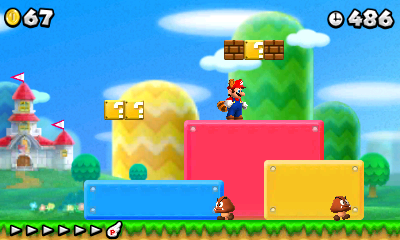
The original NSMB 2 was not the most exciting game in the world…
Has it been difficult working with this game’s engine? How do the level editing tools work for it?
Gimzie: As far as the other games in the series go, this one is actually quite modular when it comes to modifying various parts of the game. Of course, however, we’ve made quite a lot of adjustments to the game’s engine to facilitate the scope of our mod.
For example, we’ve increased the amount of available music and level slots, un-hardcoded lighting (so it can be set per-level instead of being tied to a background), added back an entire unused tile layer to the game, and even added vertical movement to the world map system.
The tool I use for level editing is a version of CoinKiller (a publicly available level editor for NSMB2) modified to support some features unique to SMBNext. As far as level editing goes, what you see in-game is actually generally quite close to what’s seen in the editor.
Actually, I generally make sure that every new enemy or mechanic has an accompanying visualization in the editor. Aside from this making stages much easier to conceptualize and design, I want the game to be accessible as a platform for modders to create their own stages in, much like Newer Super Mario Bros. Wii is being used today.
Also worth mentioning is that the game is set up so that rapid playtesting is possible; I can make changes to one segment of a stage and instantly reload it in-game to give it a test-run, much like in the Super Mario Maker series of games. Level areas will go through many, many test runs before being even semi-finalized.
One thing we’re very interested to see is how creative the levels are, with the Steam Gardens one being a personal favorite. How do you come up with levels for Super Mario Bros Next?
Gimzie: It depends! We have all of the overarching world themes planned out in advance, but Super Mario Bros. Next focuses on further refining those general world themes into various sub-locations that could tangibly take place in the world they’re in. For example, take the overarching theme of “desert”; a staple of any Mario game.
We might factor this down to sub-themes like “bony wavy sand dunes,” “canyon tops under silhouette,” “train passing through a canyon,” or “sandstone brick mural tower.” The idea is that no two stages in the same world look exactly the same; there’s always some sort of spin on the environmental theme.
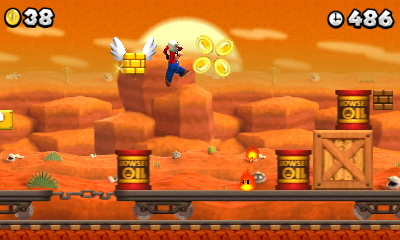
The train level from SMB Next
Usually, gameplay mechanics & enemies are decided after the environmental theme is finalized, and are always tested before developing an entire stage around them. For example, the main mechanic for the factory stage shown, spike traps, was chosen after thinking about the types of hazards you would naturally see in that kind of environment.
Are there any interesting level concepts you’re working on that you can’t show yet?
Gimzie: There are so, so many interesting level concepts that I wish I could show, but we have to maintain a level of wonder and surprise for the game’s final release. I’m very glad to see people’s reactions to the stages we’ve shown so far, and I hope we can share more in the future.
There are also an impressive amount of new graphics and tilesets here. How do those get created and added to the game?
Hus: Instead of drawing tilesets by hand or editing existing images (like most of the series’ modding communities do), I actually model and render the tilesets entirely, using Blender.
In the beginning, we used the drawing/editing approach, because while I had always been interested in 3D modeling, it took a lot of time and effort to learn. Eventually, Explos brought up the idea of modeling and rendering tilesets, so I started learning how to model and work with lighting. The result can be seen in our previous sneak peeks, as well as the trailer.
After modeling the tileset in Blender, I have it output a rendered image, which then gets imported into the tileset editor; a part of CoinKiller. The tool then saves the tileset in the game’s own tileset format.
Each background’s textures are also fully modeled and rendered in Blender. In addition to the base model, a second model is required for in-game use, which is usually just comprised of flat polygons with the textures applied to them, as well as some additional effects. Finally, the models and textures are imported for use in-game, in the game’s model format.
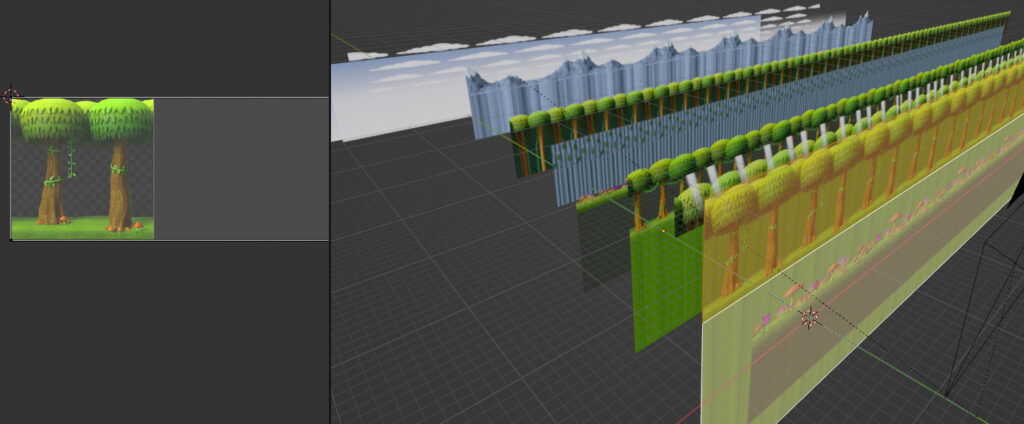
On the left: A single texture and its UV map for the front polygon, On the right: All the textured planes that make up a complete background.
Is it challenging getting models to work within 3DS limitations for a game like this?
Hus: Working with backgrounds is kind of restricting because we can’t make textures too large. This restriction can potentially lead to more repetitive backgrounds, but that’s not a huge concern given the game’s zoom level. The restrictions also depend on which objects (and how many) are used in the level that the background is for. Some objects use more or less VRAM, which gives me more or less restrictions to work with. But as of now, that hasn’t been an issue.
Explos: Creating models for enemies and objects isn’t overly restrictive. We have to be a little cautious of the poly count and the resolution/amount of textures used to avoid situations where we are limited by the system’s VRAM, but overall these restrictions aren’t a real hindrance.
The challenges come with trying to get the visuals of our custom models to match those already present in New Super Mario Bros. 2, especially when those custom models are of enemies or objects that have been present in other Mario series titles. With those, it becomes especially obvious when something doesn’t quite look right.
Creating models for world maps, on the other hand, does lead to us running into some issues due to the limitations of the 3DS hardware. With world maps being quite large, they typically use significantly more textures and have a much higher polycount than the majority of other models in the game. This means we have to be careful with how we design them so that we aren’t unnecessarily wasting the system’s resources and running into performance issues.
Due to our maps being much larger in scope than those seen in New Super Mario Bros. 2, we also had to make a couple of changes to compensate for the increase of scale while avoiding issues such as running out of VRAM. Most notably, we implemented a flexible culling system into the world map scene, so that we can split the map model into multiple segments and only load the segments that are in view.
Your music choices are pretty awesome too. What’s the process for porting music to New Super Mario Bros 2?
Gimzie: As far as bringing new music into the game goes, the process is a little more in-depth than it might seem at first. The Nintendo 3DS sound hardware isn’t that great to begin with, so all music for the game has to have its dynamic range (difference between the quietest and loudest parts of the track) lowered enough that all of the key details are able to get through the system’s small speakers, at an appropriate volume.
There are also some dynamic music-related quirks we have to account for; every single stage track in the original game has extra sub-tracks for activating a Gold Ring and donning a Super Leaf. While we’ve ignored the Gold Ring sub-track, all new stage music for the game does have a Super Leaf sub-track, just like the original does.
We’re also looking at adding some more audio-related features that the game is lacking, like environmental audio and more use of dynamic music, but nothing’s been set in stone yet.
And how do you choose what songs to use (outside of the obvious, like the Steam Gardens theme for the Steam Gardens inspired level)?
bunten: Usually, we look for an existing piece of music from a Mario game that might fit well for a certain level theme, often with heavy adaptation. There are many Mario fan projects that like to use music from spin-off games, such as Super Mario RPG, but personally, I tend to stick close to the main series Super Mario games. I feel that the music from those games fits my overall style and SMBNext much better.
For original music, how do you create fitting songs for this hack?
bunten: I most often start by playing a level that needs music over and over again, getting a feel for what I think the background music should sound and feel like. I take in the visuals, the speed at which you progress, and the overall tone and stakes of the level. After this, I begin working on a concept for the music, which involves working on the instrumentation, melodies, chord progressions, and so on.
When it comes time for testing, I will either play the level while the music is playing from my DAW or I’ll manually import the music to test on an actual 3DS. If I feel that it isn’t good enough, I go back and edit the track further. Sometimes, it only takes me one iteration to know it’s something I’ll be happy with, but other tracks can go through many revisions before I feel that they’re good enough.
On a side note, sometimes I just make a track for fun and it ends up being used in SMBNext because it fits with something that’s already in the mod. It’s kinda funny.
There’s also a lot of interesting code changes being made here too, with the site mentioning new enemies, power ups and other such additions. How difficult is it to add these things to New Super Mario Bros 2?
Bent: The most difficult part is reverse engineering the original game’s code. In programming functions, variables and so on are named, but that information is stripped out when the game is compiled to a raw executable file and shipped. We have to take that binary file and then manually discover which parts do what.
Once you find the basic components for creating level entities, colliders, and physics, and the code that interfaces with the original game is written, it actually isn’t that difficult to create custom enemies. In fact, it isn’t much different from creating enemies in a regular game engine.
Things like writing custom power-ups are way more problematic though, as those have to interface with the original game’s code in a lot of places, requiring dozens of hours of reverse engineering the related original game’s code.
What are some of your favorite new enemies and mechanics you’ve coded so far?
Bent: Out of the current custom enemies in the game, I probably enjoyed programming the Biddybuds the most. There is some quite complex logic required to keep them moving neatly in their chains. Bringing Stingbys into a 2D Mario game also was quite fun.
As far as level mechanics go, porting things that Nintendo seemingly forgot to add to NSMB2, such as the rolling hill platforms from NSMBW, is also pretty interesting to do.
Have you made new bosses for this game? Or plan to add them in future?
Bent: Yes. The plan is to have at least one custom boss fight per world, without reusing any of the boss enemies present in the original game.
Are there any limitations there? Like hard coded elements of the game that are difficult to change at the moment?
Bent: There aren’t many aspects of the game’s code I haven’t yet looked at. With enough time and effort we can add and modify basically anything we want, as long as the 3DS hardware allows it.
One thing that for example wouldn’t really make sense for us to do would be the Ice Flower power-up, which people often request. This would require us to add the frozen state back to all the enemies from the original game, which would take way too much time. That time is better spent on creating other new mechanics and enemies.
How is the NSMB2 scene where custom enemies and other programming elements are concerned? Have other hacks managed to add these to the game?
Gimzie: While there have been some simple code modifications released publicly for the game, there haven’t been any other mods that have added custom enemies or other elements, save for SMBNext: Sunset Shores, which uses code modifications originally created for Super Mario Bros. Next.
It’s also interesting to see how different the world map is here too, with a fully explorable setup entirely different from the base game. What made you decide to go this route?
Gimzie: The world map is actually not too dissimilar to the base game’s; the only real difference is that camera movement isn’t restricted to the horizontal axis. This allows us to create larger, more full-scale environments that make you feel like you’re progressing through a world. We’ve also added support for climbing and swimming on the map, which helps bring some worlds to life.
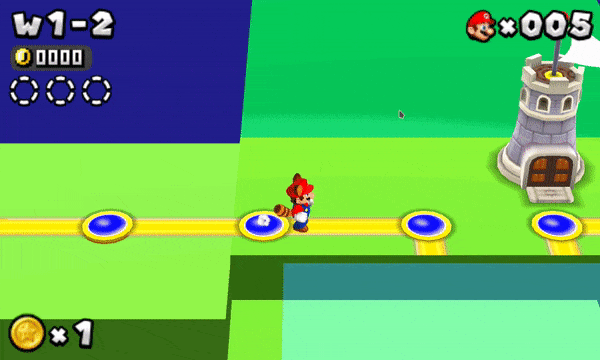
As you can see, the Super Mario Bros Next map setup scrolls both horizontally and vertically, and has both swimming and climbing animations now.
Explos: The changes we made to the map system have been done to facilitate more freedom with how maps are designed. More flexibility with camera movement, as well as technical additions (such as a proper culling system and more movement types), allow us to create maps much larger in scope than the original game, letting us play much more with verticality and perspective when designing our maps.
The approach we’re taking with world map design is to provide a sense of continuity between stages in the game and how they are represented on the world map, blending small diorama-style elements of each level together to create a cohesive environment that feels much more connected and representative of the progression you experience while playing through each of the levels. Had we chosen to stick within the restrictions of the retail system, we wouldn’t be able to properly represent levels on the world map in quite the same way.
Was it difficult to implement in NSMB 2?
Bent: Figuring out and documenting the map engine took quite a while. The changes to camera movement were actually pretty easy to make, as they just involved setting the camera position to the player’s position. With the custom player movements, there are lots of places where I had to interface with the original game’s code, which made it a little bit more difficult. Getting the movements to actually look good also wasn’t that easy.
What levels are your favorites so far?
bunten: I really like most of the levels, so for me, it’s hard to pick favorites. Regardless, in the 2022 trailer, you can see an autumn level with falling leaves, a sewer level with Morty Moles, and of course, the Steam Gardens factory level. Those have always been my favorites to go through and replay, they’re really fun!
Hus: That’s not easy to answer since I’m responsible for all the tilesets and backgrounds, so there is some bias. But levels that stand out to me and I like to replay are canyon train, the silhouette canyon level, the poisonous sewer and the Steam Gardens-esque level.
Explos: A level I really like is this one that puts an interesting twist on a common trope: being chased by a [REDACTED] while you are constantly scrambling to climb and run your way through, trying to outclimb the danger that follows behind you, while also avoiding the swarms of enemies blocking your escape (or getting stuck), and finally making your way to safety.
Bent: My favorite level so far is probably the one inspired by Super Mario Odyssey’s “Wooded Kingdom”. I really like the visuals for that stage, and the combination of moving red platforms with extending spikes is quite fun. The sewer level with the manholes, flip blocks and Morty Moles is a close second.
Gimzie: To be honest, it’s a little hard to pick favorites when you’re the one designing every single stage, but if I had to choose, I’m quite fond of the silhouette jungle stage, as well as the bramble vine stage.
Any level ideas you had that didn’t work out for whatever reason?
Gimzie: Way too many to list! Even for mechanics that did work out in the end, many stages have been redesigned due to fundamental problems or technical issues, and there’s still some stages that could use some retouching here and there.
However, if I had to point one out in particular; there was a jungle stage that had these mud slopes that would force you to slide down to the end, without allowing the player to jump off them. The idea was that you’d have to time your jumps with the short stretches of grass placed in-between, as well as swing across vines to navigate around the slopes, but playtesters reacted very negatively to the level, some calling it the “worst they had ever played”.
That said, I haven’t given up on the idea just yet! Unfortunately, you’ll have to wait and see if the mechanic makes it to the final game. It’ll be a surprise.
Do you take inspiration from Nintendo and Retro Studios’ level design philosophies for them? Like the whole ‘4 step level design’ setup?
Gimzie: I do sometimes take inspiration from those sources, but I avoid sticking to a one-size-fits-all approach to level design. I’ve seen a lot of it in various related modding communities, and I’ve found that it can often be more detrimental to a stage than helpful.
It’s a little hard to describe, but I usually use a style of level design that fits the stage in question. Some stages might be more linear and “cut-and-dry”, while others might have some hints of exploration, for example. It can also be very fun to mix a level up halfway through or towards the end in a way the player might not expect.
One thing that I do keep in mind is a focus on longer, more “complete”-feeling stages. I feel like a lot of stages in the New Super Mario Bros. series tend to emphasize “short but sweet” progressions, which works quite well when you have a smaller set of stage themes that you repeat throughout the game, but doesn’t work too well for levels are that are intended to be entirely unique from one another.
When stages are too short, they can end up being forgettable for the player, and when stages are too long, they might start to be frustrating. Balancing length and difficulty can be tricky to do, but I hope that by providing a variety of types of stages with varying lengths, players will find the game’s pacing to be “just-right”.
Regardless, once it’s done, what next? How do you plan to promote it?
Gimzie: Two weeks after the game is released, we plan to release complete modding tools and the game’s source code to the community. We decided on this fairly early on, as we want a period of time where players can enjoy the game without being spoiled by people attempting to mod stages in the game. Additionally, the game’s soundtrack will also be released around the same timeframe, along with a “bonus side” soundtrack that includes a lot of cut tracks and demos from the game.
As far as promotion goes, YouTube has actually worked out pretty well for us, and we aim to release a proper trailer for the game’s release. In terms of other forms of promotion though, we have a Twitter account and Discord server where we make announcements, and as the release date will be announced ahead of time, we would definitely appreciate it if our community spreads the word come launch week.
However, we’re far away from that point in time, so we aren’t worrying too much about it right now.
Do you ever worry that Nintendo will try and shut it down?
Gimzie: Whenever we publish any major announcement videos (such as this year’s trailer), we always get an influx of comments telling us to “watch out for Nintendo,” or that “Nintendo will shut down our project and sue us,” and it’s a little disheartening to see, both from a developer’s and player’s point of view.
We get it. There’s no shortage of Nintendo fan games being taken down for various reasons, some more legitimate than others. However, given the fact that to this day, there has never, ever been an NSMB-related takedown, and that massively popular ROM hacks such as the Newer series continue to remain up, we are fairly confident that Nintendo will likely leave us alone, assuming we don’t by some string of bad luck end up releasing around some major Mario-related announcement.
In terms of legality, we try to stay on the safe side as much as possible. We do not and never will accept donations or any sort of payment related to this project, and we do not condone software piracy. Users in our Discord server who attempt to play SMBNext-related mini-hacks with a pirated copy of the base game will often find themselves being refused support until they provide a proof of purchase.
That said, we do find Nintendo’s relationship with fan content to be quite poor when compared to other companies in the same market. You’ll never see an influx of fans telling project developers that SEGA or Square Enix are going to take their game down; it really seems to be a Nintendo thing. I’m still hopeful that one day things may change for the better, but I’m not sure that day is anytime soon.
What’s the plan if that does happen?
Gimzie: While we haven’t received any notices regarding the project itself, we have actually had our trailer taken down with a generic takedown notice used for modding videos on YouTube. Despite this cutting off our rising viewership, we had very little difficulty in getting the video reinstated in about two weeks’ time, thanks to YouTube’s generous copyright appeal system.
So overall, we aren’t too concerned about Nintendo shutting down our project. And for what it’s worth, it happens that a lot of projects that do get shut down by Nintendo eventually see the light of day in one way or another, and passionate communities still form around them, despite their “official seal of disapproval.” But hopefully, it wouldn’t come to something like that.
Either way, assuming the release goes fine, what’s next? Do you guys have any other NSMB 2 hacks ideas?
Gimzie: Nope! Once we’re done with Super Mario Bros. Next, we’re done done! The most we’ll be doing after that is provide support to the modding community.
What about hacks for other games, or indie games not involving existing IPs?
Gimzie: As a team, we don’t have any plans to move onto any other games, or indie development. But obviously, individual team members are free to do what they’d like, so maybe you’ll see one of us mod something else one day, who knows?
Finally, what advice would you give to people wanting to hack New Super Mario Bros 2 (or even just get into game development in general)?
Gimzie: There are far more interesting games to mod, seriously! I’d even suggest looking outside of just Nintendo properties; there are tons of great indie games that have official modding support, allowing you to easily try your hand at game development without having to start from scratch. And hey, Super Mario Maker is a great way to try out some 2D level design as well!
That said, if you do insist on modding New Super Mario Bros. 2, or even any other entries in the series, who’s to stop you? The tools are out there, waiting to be used. Just don’t be afraid to get involved with the community and be accepting of both positive and negative feedback; there’s always room to improve, it’s how we get better and hone our creative talents.
As for game development; none of us can really be considered professional game developers, but if I absolutely had to give advice, it would be to start learning something you enjoy doing, and stick to it. If there’s anything that modding and game development have in common, it’s that you have to keep at it and share your work with other people. Build connections, and all that stuff.
Hah, that’s an interesting answer there! You don’t often hear modders suggest that you pick a differet game to mod instead. Imagine if Kaze said not to mod Super Mario 64 and suggested modding A Hat in Time instead!
But seriously speaking, that’s a fair point we suppose. Nintendo isn’t exactly a modder’s friend, and finding support for modding their games is entirely dependent on whether the community has gathered around said game over the last few decades or not. If your choice of game is Super Mario World, Super Mario 64 or Mario Kart Wii you’re probably set, if not, good luck.
So yeah, it’s probably a good idea to pick a game with official mod support if you can. Even if just for clear documentation and somewhat understandable code underlying the whole thing.
Either way, thanks for the advice there! It’s definitely worth considering if you’re interested in game development, with the whole ‘persistance’ aspect likely being the most important thing to take away there.
Still, that’s the interview. So what did you think? Did you find it interesting seeing what goes into a mod like this? What aspects of Super Mario Bros Next are you most excited about based on the information provided here?
Let us know what you think in the comments below, on social media, or on our Discord server today!
